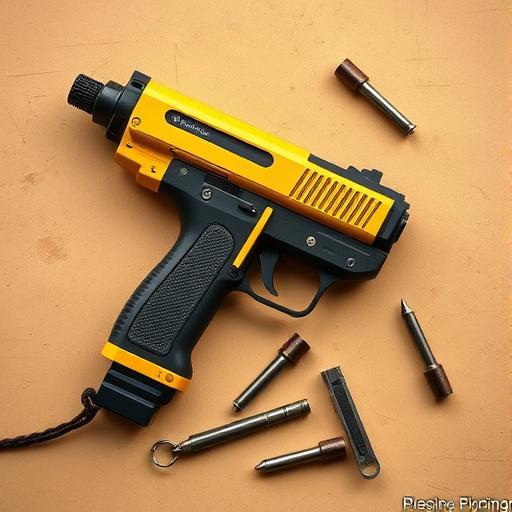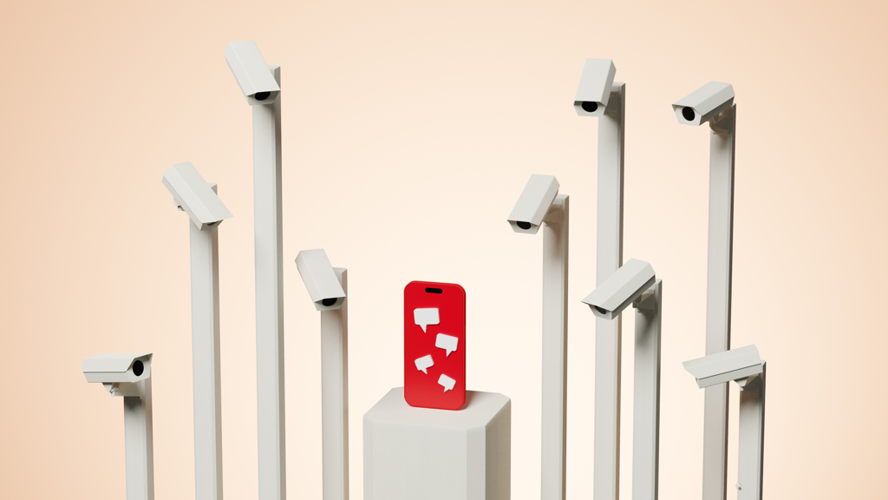How to Choose and Buy Pepper Spray: Practical Buying Tips, Costs, and Safe Use

Every day millions of people take small steps to protect themselves: choosing well-lit routes, sharing location with loved ones, or carrying a simple self-defense tool. For many, pepper spray is the practical, legal, and portable choice — but shoppers often get stuck on questions like: how much should I spend, which model suits my needs, and where can I buy a reliable product? This post walks you through those questions in plain language. You’ll learn the pros and cons of different pepper spray formats, how price relates to performance, legal and safety considerations, and where to browse legitimate options — including links to compare pepper spray gun prices and find pepper spray for sale. By the end you’ll be able to make a confident, informed purchase and use your choice safely.
Why pepper spray is still one of the most practical self-defense tools
Pepper spray (oleoresin capsicum) is compact, easy to carry, and can stop an aggressor temporarily without causing permanent harm in most cases. Compared with heavier options (batons) or firearms, pepper spray is low-cost, low-training, and accessible to people of many ages and physical abilities. For many urban commuters, shift workers, and students, pepper spray acts as a “stop-gap” — giving seconds to escape, call for help, or reach a safer location.
That said, not all pepper spray products are identical. There are big differences in delivery method, range, activation, and safety features. Understanding those differences will help you match your budget to your real-world needs.
Formats and features: choosing the right type for your lifestyle
Pepper spray comes in several formats. Pick based on how you carry it and what scenarios you expect.
-
Keychain or pocket canisters: Small, lightweight, and discreet. Great for everyday carry in a bag or on a keyring. They have limited capacity and range (usually a few feet) but win on convenience.
-
Larger canisters (spray/mist): More capacity and slightly better range, often used by runners or cyclists who want a little extra reach. Be careful: larger cans can be heavier to carry.
-
Pepper spray guns / launchers: These devices, such as the popular models sold online, deliver more controlled streams and sometimes longer range. If you want more accuracy and a longer reach, check current pepper spray gun prices to compare models before buying.
-
Gel or foam formulations: Gel-based sprays reduce blowback in windy conditions and are less likely to drift onto bystanders. They’re often preferred for crowded settings.
When evaluating features, consider:
-
Range: Longer range gives more safety margin, but might come with higher cost or larger size.
-
Capacity: More shots/capacity means you can use it for training or if you need multiple bursts.
-
Safety/lock mechanism: An effective safety prevents accidental discharge in a bag or purse.
-
Activation: Some units have easy one-handed activation, which is crucial if you’re carrying a bag or walking with children.
-
Legal compliance: Some regions restrict certain formulations or devices — always check local laws before buying.
How price relates to performance: getting value for money
Price often reflects build quality, range, and extra safety features — but it isn’t everything. Cheap canisters might be fine for short-range, infrequent carry; premium units often offer longer effective range, better safety features, and sturdier housings that withstand everyday wear.
A sensible approach:
-
Start with your use-case: If you want something for occasional urban use, a compact canister from a reputable seller will usually suffice. If you patrol remote routes, jog off-road, or carry a device for work, invest more in range and capacity.
-
Compare specs, not just price: Look at range (feet/meters), number of bursts, and whether the spray is stream, fog, or gel. A longer-range stream can let you maintain distance — a real advantage.
-
Factor in training and replacement: Pepper spray canisters expire; budget to replace them periodically. Also, if possible, attend a short training or practice with an inert/UV-marked training unit to get comfortable with activation and aiming.
If you’re shopping, browsing a curated store that lists multiple options helps — you can compare models for both small everyday units and more advanced devices like pepper spray guns. For instance, if you’re specifically looking to see pepper spray for sale, reputable vendors list features and safety notes so you can match the product to your needs.
Safety and responsible use: training, storage, and legal awareness
Owning pepper spray carries responsibility. Misuse can harm yourself or others, and in some locales it’s regulated. Follow these safety practices:
-
Know local law: Some places restrict certain concentrations, sizes, or types (gel vs. spray). Before purchasing, confirm legality.
-
Practice with an inert trainer: Many training canisters emit a harmless marker or click so you can rehearse activation and grip without exposure.
-
Carry smart: Store in an accessible but secure spot (pocket holsters, belt clips, or keychain holders). Avoid loose placement inside a bag where accidental discharge or difficulty retrieving it could occur.
-
Use only in legitimate self-defense: Only deploy pepper spray in a real, immediate threat. Unnecessary use can have legal consequences.
-
Aftercare: If you or someone else is exposed, follow manufacturer guidance and seek medical help if symptoms persist. Remember that pepper spray effects subside, but they can be intense and frightening.
Real-world example: a commuter’s decision-making process
Consider “Aisha,” a young professional who takes late trains home twice a week. She wanted something compact and legal that she could quickly access from her handbag. Her priorities were ease-of-use, one-handed activation, and minimal risk of accidental discharge. After comparing several canisters and reading specs, she chose a keychain-style canister with a safety flip-top and gel formulation — reducing drift in crowded platforms. She practiced retrieval and activation at home with a training unit twice, stored the canister in a dedicated pocket, and updated it when it reached its expiry. Over the first year her device never needed deployment, but the confidence it gave her made late-night commuting less stressful. This practical, low-cost approach matched her needs better than an expensive gun-style model.
Choosing a vendor: what to look for when buying online
When buying online, look for the following signs of a reputable seller:
-
Clear, detailed product descriptions: Specs should list range, capacity, formulation, safety features, and expiry information.
-
Real product photos from multiple angles and close-ups of activation features.
-
Customer support and returns policy: A reliable seller will offer post-sale help and clear return options.
-
Transparent safety and legal notes: The product page should advise buyers to check local regulations and provide basic safety guidance.
If you want to browse options quickly, vendors that specialize in self-defense gear typically carry a range of units, from compact canisters to gun-style launchers. You can compare models and prices directly by visiting product collections that list multiple options — for example, check listings of pepper spray for sale and specific product pages that detail pepper spray gun prices for higher-end models.
Maintenance, expiration, and replacement
Pepper spray isn’t a “buy once and forget” item. Key maintenance points:
-
Check expiry dates: Most canisters list an expiration — usually 2–4 years. Replace on time to ensure effectiveness.
-
Test the mechanism (without discharging): Make sure safety flips and triggers move freely. Replace if mechanisms feel sticky or damaged.
-
Store at moderate temperatures: Extreme heat or cold can damage the propellant or container.
-
Replace after discharge: A can that’s been used (even partially) should generally be replaced.
Budget for an occasional replacement when you estimate lifetime cost — it’s a small ongoing expense compared to the security benefit.
Final thoughts: match budget to real need, and prioritize safety
Pepper spray is one of the most accessible self-defense tools available. The right choice depends less on flashy marketing and more on honest assessment of your daily routines, legal environment, and comfort with the delivery format. If you want a quick comparison of options and prices, look through a reputable supplier’s product pages to see up-to-date pepper spray gun prices and to browse pepper spray for sale. Invest a little time in checking features and practicing with a trainer — that small effort gives the biggest return in safety and confidence.
Frequently Asked Questions (FAQ)
1. Is pepper spray legal to carry?
Legality varies by country and sometimes by region within a country. Some places restrict certain concentrations or devices (e.g., pepper spray guns). Always check local laws before purchasing or carrying pepper spray.
2. How far does pepper spray reach?
Range depends on the format: small pocket sprays may reach 3–6 feet, while gun-style or larger canisters can reach further. Check the product specifications for the manufacturer’s stated effective range and choose what suits your needs.
3. Can pepper spray be used in windy conditions?
Wind increases the risk of blowback and affecting bystanders. Gel formulations and stream-style sprays reduce drift compared with fog or mist sprays, making them safer choices in windy or crowded areas.
4. How often must I replace my pepper spray canister?
Most canisters have expiry dates (commonly 2–4 years). Replace at expiry, after any discharge, or if the mechanism becomes faulty. Regularly check the canister’s date and storage condition.
5. Will pepper spray permanently harm someone?
When used properly, pepper spray causes intense but temporary effects (tearing, coughing, temporary vision impairment). Severe or prolonged exposure may require medical attention. Use only as a defensive measure and follow post-exposure guidance.
6. Should I train before carrying pepper spray?
Yes. Practicing with an inert trainer helps you become comfortable with aiming, activation, and retrieval under stress. A little practice significantly improves safe and effective use.





